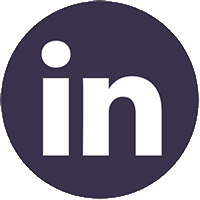Hearing Healthcare in 2025: Shifts, Challenges, and Opportunities

Shifts, Challenges, and Opportunities in Hearing Healthcare: Insights from the 2025 IHS Panel
Every year, the International Hearing Society brings together leaders from across the hearing healthcare industry. This year’s panel in 2025 highlighted some of the biggest challenges and opportunities shaping the profession today.
What stood out wasn’t just the technology or the business trends, but the way these changes intersect with patients, professionals, and the future of care.
Consolidation and New Entrants
The last decade has been defined by consolidation. Larger groups continue to acquire practices, while many long-time owners are looking for exits as they near retirement. At the same time, there’s a wave of new professionals starting their own practices, creating fresh opportunities for independence and innovation.
This mix of consolidation and entrepreneurship means the future won’t be dominated by one model. Instead, there’s room for both larger groups with scale and independents who want to remain nimble and personal.
OTC Hearing Aids: Growth, But With Limits
Over-the-counter (OTC) hearing aids were a major talking point. They’ve clearly grown, especially for mild-to-moderate hearing loss, but they haven’t replaced the professional experience.
Consumers often struggle with fit, comfort, and overall use. While the technology has improved, many still walk through clinic doors after trying OTC solutions. Awareness remains high, but confusion remains even higher.
Technology and Innovation
Artificial intelligence and machine learning continue to push boundaries. Devices today can learn and adapt in real time, making adjustments that would have been unimaginable just a few years ago.
Future innovations include:
- Earwax management solutions
- Simplified connectivity and apps
- Technology that makes life easier for both patients and professionals
Despite these advancements, the human touch remains essential. Technology can assist, but it can’t replace the expertise and care of a trained professional.
Economic Cycles and Market Slowdown
The industry is facing a slowdown in 2025, with some attributing it to consumer uncertainty and others noting the natural five-year replacement cycle from the COVID-era surge. While the year started flat, the outlook remains cautiously optimistic, with modest growth projected by year’s end.
Managed Care and Margins
Managed care remains a love-hate relationship for the industry. While it expands access, the margins are thin. Many practices are choosing to step away from plans that don’t make financial sense, instead focusing on balancing private pay with third-party participation.
There’s a tipping point — once managed care makes up too large a percentage of a practice’s revenue, growth and profitability become difficult to sustain.
This is exactly where operational efficiency becomes critical. At Snapscale, we are were at IHS showing practices how to turn to HIPAA-compliant virtual assistants through partners like Snapscale to protect margins while still delivering high-touch patient care. By offloading administrative and front-desk tasks, practices can preserve staff time for private-pay patients and reduce the drag that managed care often creates.
Consumer Awareness and Engagement
One of the most pressing challenges continues to be awareness. Too many consumers delay testing or avoid the conversation altogether.
The industry is calling for campaigns that reframe the conversation — moving from “hearing loss” to “hearing ability,” and from purely functional benefits to emotional connections. Ads that inspire lifestyle improvements resonate more than clinical language.
The opportunity is clear: create a cultural shift where hearing health is seen as essential, positive, and even aspirational.
Snapscale supports this shift by giving practices back the bandwidth to engage. When front-office teams aren’t buried in repetitive tasks, they can spend more time building community relationships, running local awareness campaigns, and delivering the kind of patient-first experience that drives word-of-mouth. Having a Virtual Front desk is not about replacing staff but supporting your clinics in a meaningful, cost-effective way. This business continuity offers you options. These options, freedom, and flexibility provide room to get into your community to spread awareness in the right local places.
Workforce Development
Attracting and retaining licensed professionals is another growing challenge. With an aging workforce, the industry needs to recruit the next generation by showing both the mission-driven purpose of the field and its financial rewards.
Practices that focus on creating excellent employee experiences will be better positioned to thrive.
Looking Ahead: Vision for 2030
By the end of the decade, technology will be faster, more adaptive, and more connected than ever before. Patients may enjoy an “easy button” experience for fittings and care, but the role of the professional will remain critical in guiding outcomes and building trust.
The balance between innovation and human care will define the industry’s next chapter.
Snapscale is building for that same future, where technology supports, not replaces, the human touch. By scaling virtual teams now, practices can prepare for the next wave of innovation while protecting what matters most: patient relationships
With partnerships like HiBridge (Formerly Virtually Sally), Snapscale’s technology-driven partnership solution, your front desk can be supported while maintaining the human touch.
Closing Thought
The panel reminded me of one truth: this is a resilient industry. Despite uncertainty, thin margins, and changing consumer behaviors, the opportunity to improve lives through better hearing has never been greater.
If we can combine innovation with awareness, business strength with patient-first values, the future of hearing healthcare will not just survive — it will thrive. With the right partners, clinics don’t have to navigate these shifts alone. Snapscale exists to help practices grow, scale, and sustain patient-first care, even as the industry transforms around us.






